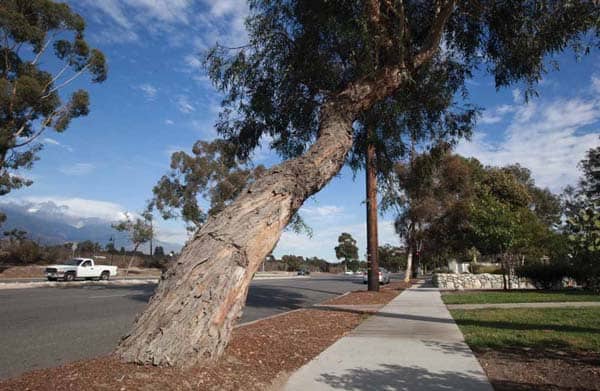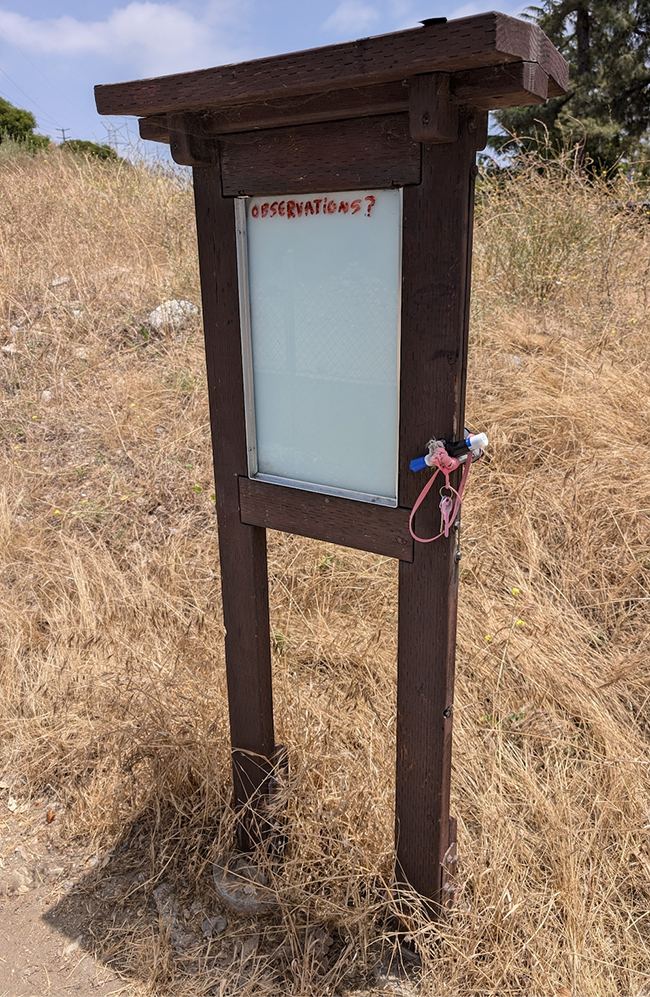City trees doomed due to poor health and care

The city’s urban forest took a hit in September after 58 city trees were removed, 33 at La Puerta Sports Park, and no new saplings were planted by the city that month.
Additionally, 19 eucalyptuses will be removed due to a variety of reasons, including poor health, structural weakness and proximity to upcoming construction.
The news came during the November 1 Community and Human Services Commission meeting where the body was asked to review and weigh in on the tree removal as part of the Foothill Boulevard Improvement Project. In the consent calendar item, which was unanimously passed by the commission, Community Services Director Roger Bradley explained why the city feels it needs to remove the trees.
One, a sugar gum located on the 400 block of east Foothill Boulevard, will be removed due to construction that will lengthen the turn pocket from eastbound Foothill Boulevard to northbound Mills Avenue to alleviate traffic, the city said.
Ten desert gum and manna gum eucalyptus trees are being removed due to what the city maintains is “structural weakness.” Reasons 
“We had a lot of limb drops in the traffic area,” Mr. Bradley said in a phone interview on Wednesday.
Eight sugar gum and manna gum trees are being removed due to “declining health,” which the city describes as a combination of age and vulnerability to borers and other tree-killing pests.
During the October 18 Tree Committee meeting, where the removals were first introduced, Deputy Director of Community Services Dave Roger told Commissioner Phyllis Munson that the drought was one of the reasons for the decline.
Once Claremont’s irrigation system on medians was shut off by orders from the state, it took the city a while to install a new drip irrigation system in. Some trees tolerated the lack of water better than others, Mr. Roger explained.
Mr. Roger did not respond to a phone call requesting comment by press time.
One of the state mandates, Mr. Bradley said, prohibited cities from watering turf, and the irrigation system on the median was designed around turf.
The city had to go back in and install the drip irrigation system, “while the trees were there without water for some time,” Mr. Bradley said.
But Mr. Bradley was quick to point out that lack of water from the drought wasn’t the only reason why the trees had declined.
“The drought contributed to their demise but they were mostly unhealthy and old at this point,” Mr. Bradley said.
The tree committee also directed Mr. Roger to look into two trees slated for removal at the 300 block of Foothill Boulevard and decide which one to save, according to the minutes. Both trees are manna gum trees with a 28-inch and 32-inch diameter.
The trees slated for removal range from around 40 inches in diameter to around 12 inches, according to the report. The smaller ones were planted about 10 to 12 years ago, Mr. Bradley estimated.
Around 480 new “climate appropriate plants and those who are not susceptible to the shot hole borer,” will be planted to replace the trees as part of the project, Mr. Bradley said. Some of those trees include Englemann oaks, Torrey pines, pink flowering trumpets, Brisbane box trees and Chinese panache trees.
According to Mr. Bradley, the replacements will outnumber the removed trees by a five-to-one ratio. Around 700 other trees and plants along the Foothill corridor will also be untouched during the project, he added.
Other parts of the project include the installation of bio-swales, bike lanes, new pedestrian walkways and irrigation systems. The project is slated to begin in January 2018, Mr. Bradley said.
Mr. Bradley said the drought also contributed to the death of the trees at La Puerta Sports Park, but also noted many of the trees removed throughout the city in September fell victim to tree diseases such as xylella and the Eucalyptus borer.
Mr. Bradley said the new drip irrigation system would prevent tree death in the future.
“There will be improvements on that system to help them be better maintained the future,” he said.
—Matthew Bramlett
news@claremont-courier.com









0 Comments